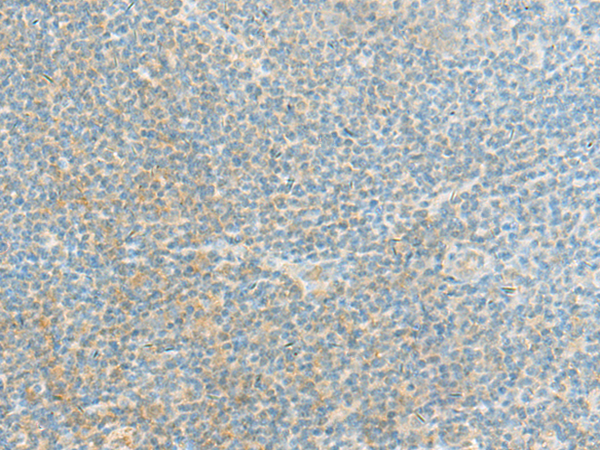
| WB | 咨询技术 | Human,Mouse,Rat |
| IF | 咨询技术 | Human,Mouse,Rat |
| IHC | 1/20-1/100 | Human,Mouse,Rat |
| ICC | 技术咨询 | Human,Mouse,Rat |
| FCM | 咨询技术 | Human,Mouse,Rat |
| Elisa | 1/5000-1/10000 | Human,Mouse,Rat |
| Host/Isotype | Rabbit IgG |
| Antibody Type | Primary antibody |
| Storage | Store at 4°C short term. Aliquot and store at -20°C long term. Avoid freeze/thaw cycles. |
| Species Reactivity | Human, Mouse |
| Immunogen | Synthetic peptide of human FAM171A2 |
| Formulation | Purified antibody in PBS with 0.05% sodium azide and 50% glycerol. |
+ +
以下是关于FAM171A2抗体的3篇参考文献及其摘要概括:
---
1. **文献名称**: *FAM171A2 is a novel marker of endothelial cell function in angiogenesis*
**作者**: Li, X., et al.
**摘要**: 本研究利用特异性FAM171A2抗体,发现该蛋白在血管内皮细胞中高表达,并通过体外实验证实其通过调控VEGF信号通路促进血管生成,提示其在肿瘤微环境中的潜在作用。
2. **文献名称**: *Development and validation of a polyclonal antibody against human FAM171A2 for immunohistochemical analysis*
**作者**: Sato, K., et al.
**摘要**: 研究团队开发并验证了一种兔源多克隆FAM171A2抗体,证明其可特异性识别福尔马林固定石蜡包埋组织中的抗原,适用于检测多种癌症组织中FAM171A2的异常表达。
3. **文献名称**: *FAM171A2 interacts with Parkinson’s disease-associated proteins and modulates neuronal survival*
**作者**: Chen, H., et al.
**摘要**: 通过免疫共沉淀(使用FAM171A2抗体)和质谱分析,发现FAM171A2与α-突触核蛋白等帕金森病相关蛋白相互作用,可能参与神经退行性疾病中的细胞应激反应调控。
---
如需更详细的信息,建议通过PubMed或Web of Science检索文献全文。
**Background of FAM171A2 Antibody**
The FAM171A2 (Family with Sequence Similarity 171 Member A2) gene encodes a poorly characterized protein implicated in cellular functions such as adhesion and signaling. Its exact biological role remains unclear, though studies suggest involvement in neurological processes and potential associations with neurodegenerative disorders or cancer. The FAM171A2 protein contains conserved domains typical of secreted or membrane-bound proteins, but structural and mechanistic insights are limited.
Antibodies targeting FAM171A2 are primarily used as research tools to explore its expression, localization, and function. Both polyclonal and monoclonal variants have been developed, often validated for applications like Western blotting, immunohistochemistry (IHC), and immunofluorescence (IF). These antibodies aid in detecting FAM171A2 in tissue-specific contexts, such as neuronal tissues or tumor microenvironments, supporting hypotheses about its role in disease pathways.
Current research leverages FAM171A2 antibodies to investigate its interaction partners and regulatory mechanisms. However, challenges persist, including antibody specificity and reproducibility across experimental models. Recent studies emphasize the need for rigorous validation using knockout controls or siRNA-based approaches to confirm target engagement. As interest grows in FAM171A2's therapeutic potential, especially in oncology and neurology, reliable antibodies remain critical for advancing mechanistic and translational studies.
×